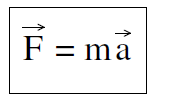
تاريخ الفيزياء

علماء الفيزياء


الفيزياء الكلاسيكية

الميكانيك

الديناميكا الحرارية


الكهربائية والمغناطيسية

الكهربائية

المغناطيسية

الكهرومغناطيسية


علم البصريات

تاريخ علم البصريات

الضوء

مواضيع عامة في علم البصريات

الصوت


الفيزياء الحديثة


النظرية النسبية

النظرية النسبية الخاصة

النظرية النسبية العامة

مواضيع عامة في النظرية النسبية

ميكانيكا الكم

الفيزياء الذرية

الفيزياء الجزيئية


الفيزياء النووية

مواضيع عامة في الفيزياء النووية

النشاط الاشعاعي


فيزياء الحالة الصلبة

الموصلات

أشباه الموصلات

العوازل

مواضيع عامة في الفيزياء الصلبة

فيزياء الجوامد


الليزر

أنواع الليزر

بعض تطبيقات الليزر

مواضيع عامة في الليزر


علم الفلك

تاريخ وعلماء علم الفلك

الثقوب السوداء


المجموعة الشمسية

الشمس

كوكب عطارد

كوكب الزهرة

كوكب الأرض

كوكب المريخ

كوكب المشتري

كوكب زحل

كوكب أورانوس

كوكب نبتون

كوكب بلوتو

القمر

كواكب ومواضيع اخرى

مواضيع عامة في علم الفلك

النجوم

البلازما

الألكترونيات

خواص المادة


الطاقة البديلة

الطاقة الشمسية

مواضيع عامة في الطاقة البديلة

المد والجزر

فيزياء الجسيمات


الفيزياء والعلوم الأخرى

الفيزياء الكيميائية

الفيزياء الرياضية

الفيزياء الحيوية

الفيزياء العامة


مواضيع عامة في الفيزياء

تجارب فيزيائية

مصطلحات وتعاريف فيزيائية

وحدات القياس الفيزيائية

طرائف الفيزياء

مواضيع اخرى
NEWTON’S SECOND LAW
المؤلف:
E. R. Huggins
المصدر:
Physics 2000
الجزء والصفحة:
227
22-11-2020
1471
NEWTON’S SECOND LAW
We have seen that a force F acting on a mass m, produces an acceleration  that 1) is in the direction of
that 1) is in the direction of  , and 2) has a magnitude inversely proportional to m. The simplest equation consistent with these observations is
, and 2) has a magnitude inversely proportional to m. The simplest equation consistent with these observations is
 .......(1)
.......(1)
Equation (1) turns out to be the correct relationship, and is known as Newton’s Second Law of Mechanics. (The First Law is a statement of the special case that, if there are no forces, there is no acceleration. That was not obvious in the late 1600s, and was therefore stated as a separate law.) A more familiar form of Newton’s second law, seen in all introductory physics texts is
 ........(1a)
........(1a)
If there is any equation that is essentially an icon for the introductory physics course, Equation (1a) is it.
At this point Equation (1) or (1a) serves more as a definition of force than a basic scientific result. We can, for example, see from Equation (1a) that force has the dimensions of mass times acceleration. In the MKS system of units this turns out to be kg(m/sec2), a collection of units called the newton. Thus we can say that we push on an object with a force of so many newtons. In the CGS system, the dimensions of force are gm(cm/sec2), a set of units called a dyne. A dyne turns out to be a very small unit of force, of the order of the force exerted by a fly doing push-ups. The newton is a much more convenient unit. The real confusion is in the English system of units where force is measured in pounds, and the unit of mass is a slug. We will carefully avoid doing Newton’s law calculations in English units so that the student does not have to worry about pounds and slugs.
At a more fundamental level, we can use Equation (1) to detect the existence of a force by the acceleration it produces. In projectile motion, how do we know that there is a gravitational force  acting on the projectile?
acting on the projectile?
Because of the gravitational acceleration. The acceleration  due to gravity is equal to
due to gravity is equal to  (9.8 m/sec2 directed downward), thus we can say that the gravitational force
(9.8 m/sec2 directed downward), thus we can say that the gravitational force  that produces this acceleration is
that produces this acceleration is
 ....(2)
....(2)
(2)
where m is the mass of the projectile.

Figure 1: The gravitational force between small masses is proportional to the product of the masses, and inversely proportional to the square of the separation between them.